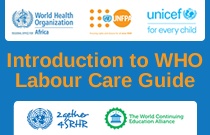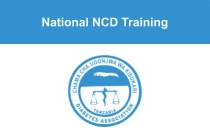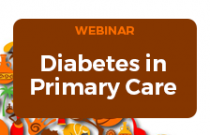EXAMPLE PRE-TEST2
Mr WCEA Administrator
ourse Description* Please add a course description with a minimum of 20 characters.
Current and emerging diagnostic tests available for the novel COVID-19 global pandemic
F1000
TESTING ORAL PREP SCORM
A snapshot of the ongoing clinical research on COVID-19
Daniele Piovani,Claudia Pansieri,Laurent Peyrin-Biroulet,Silvio Danese,Stefanos Bonovas
The pandemic of coronavirus disease 2019 (COVID-19) caused by the novel severe acute respiratory syndrome coronavirus 2 (SARS-CoV-2) presents an unprecedented challenge to rapidly develop new diagnostic, preventive and therapeutic strategiesn
WEBINAR TEST
Mr WCEA Administrator
Course Description* Please add a course description with a minimum of 20 characters.
Webinar - Test - 02
Mr WCEA Administrator
rse Description* Please add a course description with a minimum of 20 characters.
Webinar: Introduction to the WHO Labour Care Guide (“WHO Next generation Partograph”)
Dr. NKURUNZIZA
SESSION CHAIR: Triphonie NKURUNZIZA PANELISTS Mercedes BONET SEMENAS Rose Laisser Veronica Pingray Nancy Kidula Fatima Gohar Muna Abdullah Remarks: Frances Emma MCCONVILLE Hilma Shikwambi The World Health Organization launched the Intrapartum Care recommendations for a positive childbirth experience in 2018....
Treatment and management of Anthrax disease
Dr Daniel Kaonga
This lecture covers Anthrax disease, its epidemiology, signs and symptoms as well as protocols of managing and treating the disease.
Online CPD with the WCEA platform
Samantha Chapman
This webinar is to demonstrate to learners how register and gain access to the platform where they have access to courses for continuing professional development.
National NCD Training
Ms. Stella Mpanda, Dr. Stella Challe, Ms. Neema Gabriel, Lutgard Kokulinda Kagaruki, Prof. Theonest Mutabingwa, Adeline Munuo, Mussa Kelvin Nsanya, Mary Kibona, Hilda Missano, Waziri Ndonde, Dr. Fredrick Mashili, Dr. Tatizo Karolo Waane, Dr. Samwel Jacob
The goal is to reduce the burden, health-care costs and human suffering due to major NCDs by; Improving the quality of care of major NCDs in primary care. This can be achieved through: prevention and early detection, cost effective case management, Appropriate referral and follow- up, management of exacerbations and emergenci....
Pharmacogenomics and Medication Therapy
Mr Evans Chirambo
Every human being has unique genes that influence their responses to medications. Pharmacogenomics focuses on tailoring treatments based on these genetic differences, ensuring patients receive the most effective and side-effect-free therapies. This approach, known as precision medicine, represents the future of healthcare. While....
Orientation to the Labour Care Guide
Dr Louise Tina Day & Ms Justine Le Lez
The Labour Care Guide is an essential resource for midwives that provides evidence-based guidance on the provision of quality care during labour and childbirth.
Diabetes in Primary Care
Dr Daniel Osafo Darko
This lecture will help primary care workers understand the burden of diabetes and its current management.
Abnormalities of the dentition
Rachel OBrien
This session looks at abnormalities affecting the dentition including the assessment, diagnosis and management of missing, extra, abnormally formed and ectopically positioned teeth.
Hypertension in detail
Prof. John Lubega
Clinicians will understand more about pathophysiology, diagnosis, and management of Hypertension
Communication for Improved Outcomes
Elizabeth Alvarez, DNP, RN
Effective communication between both the providers of care and the patient assists in both nurse satisfaction and patient outcomes.
COMPOSITE LP
Mr WCEA Administrator
ourse Description* Please add a course description with a minimum of 20 characters.
Cardiac Disease in Pregnancy
Natasha Gaudin
Brief overview of cardiac disease in pregnancy, related changes and management of cardiac arrest




















